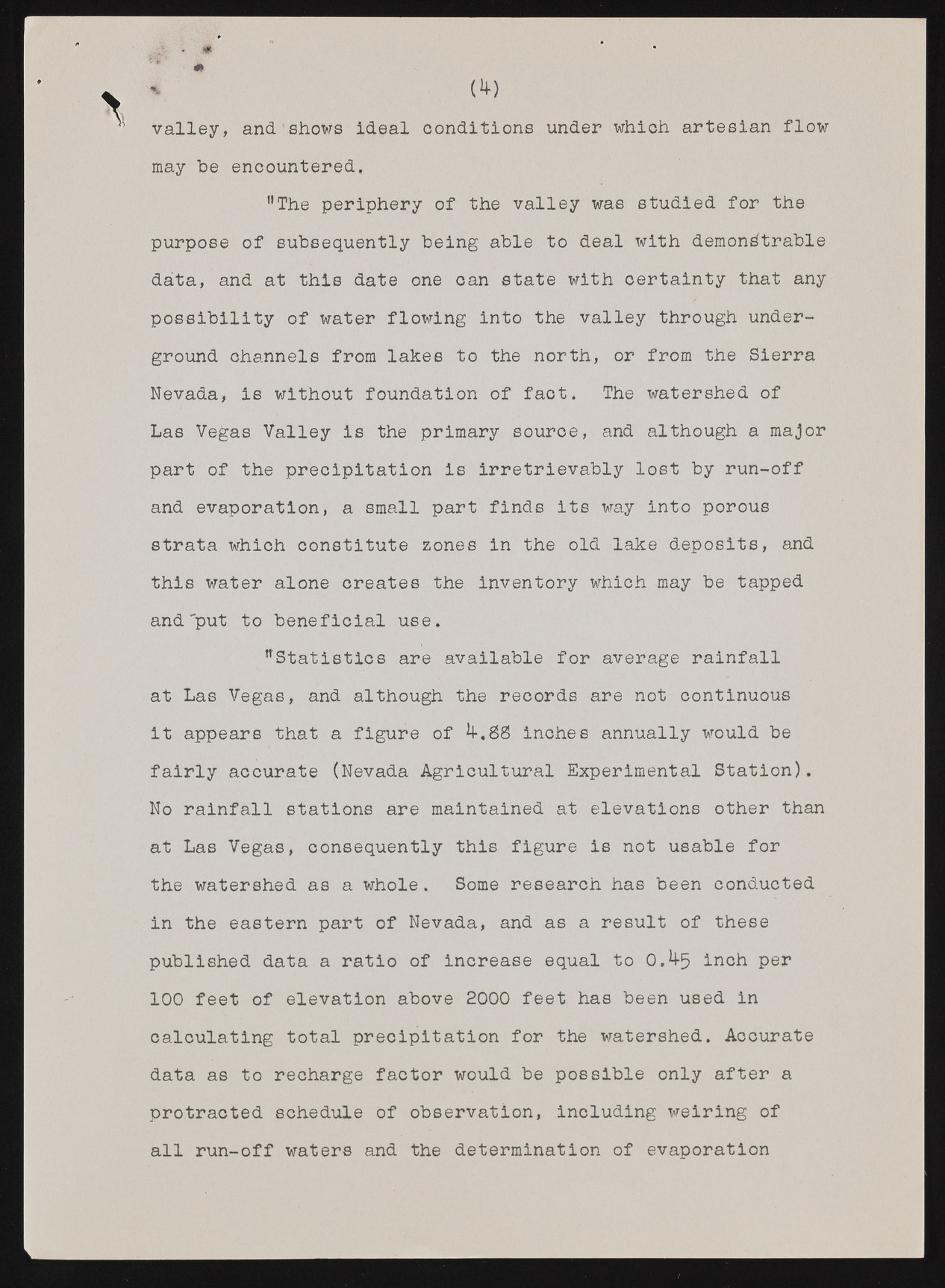Copyright & Fair-use Agreement
UNLV Special Collections provides copies of materials to facilitate private study, scholarship, or research. Material not in the public domain may be used according to fair use of copyrighted materials as defined by copyright law. Please cite us.
Please note that UNLV may not own the copyright to these materials and cannot provide permission to publish or distribute materials when UNLV is not the copyright holder. The user is solely responsible for determining the copyright status of materials and obtaining permission to use material from the copyright holder and for determining whether any permissions relating to any other rights are necessary for the intended use, and for obtaining all required permissions beyond that allowed by fair use.
Read more about our reproduction and use policy.
I agree.Information
Digital ID
Permalink
Details
More Info
Rights
Digital Provenance
Publisher
Transcription
*?’ # * < p valley, and shows Ideal conditions under which artesian flow may he encountered. "The periphery of the valley was studied for the purpose of subsequently being able to deal with demonstrable data, and at this date one can state with certainty that any possibility of water flowing into the valley through underground channels from lakes to the north, or from the Sierra Nevada, is without foundation of faot. The watershed of Las Vegas Valley is the primary source, and although a major part of the precipitation is irretrievably lost by run-off and evaporation, a small part finds its way into porous strata which constitute zones in the old lake deposits, and this water alone creates the inventory which may be tapped and'put to beneficial use. "statistics are available for average rainfall at Las Vegas, and although the records are not continuous it appears that a figure of 4-.S3 inches annually would be fairly accurate (Nevada Agricultural Experimental Station). No rainfall stations are maintained at elevations other than at Las Vegas, consequently this figure is not usable for the watershed as a whole. Some research has been conducted in the eastern part of Nevada, and as a result of these published data a ratio of increase equal to 0.4-5 inch per 100 feet of elevation above 2000 feet has been used in calculating total precipitation for the watershed. Aocurate data as to recharge factor would be possible only after a protracted schedule of observation, including weiring of all run-off waters and the determination of evaporation

